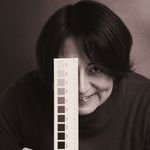 Adobe Community
Adobe Community
- Home
- Photoshop ecosystem
- Discussions
- Resizing an image to be placed in Indesign
- Resizing an image to be placed in Indesign
Copy link to clipboard
Copied
Hello all
I have been given an image, it's a CGI of a building, that I need to resize to fit a hoarding at a train station.
The JPEG I have been given has a size of 3527mm (w) and 2260mm (h), with a resolution of 72dpi.
The hoarding has a width of 6135mm and a height of 1025mm. It has to be cropped a fair degree.
Now the person I work with just inserts the image as it is into indesign and then just increases the size of the JPEG.
The artwork in design would be set up at 50% size.
Looking at the links panel in Indesign, the actual dpi is naturally at 72dpi but the effective dpi is 83.
That person says the printer is happy with that set up.
But should I not resample that image in Photoshop?
I would got into the image size panel and increase the resolution to 144, with the resample box checked.
Then when I bring it into Indesign, the actual dpi is 144 and the effective dpi is 166.
Will this provide a better print quality but is my action in increasing the resolution irrelevant??
Sorry I am a be confused. I did post earlier on this subject and struggling to get my head around this issue.
Thanks for your time.
 1 Correct answer
1 Correct answer
Short version: You are mixing up physical dimensions with resolution. Nobody in CGI talks in mm. It's all just absolute pixels. Images per se have no physical correlation to their pixel density. That said, your image would have enough resolution to plaster the entire train station's facead if need be - when viewed from sufficient distance. And there's the rub: It all depends on the reproduction method used and the viewing distance. no point in repeating stuff here, but you can find enough info o
...Explore related tutorials & articles
Copy link to clipboard
Copied
Short version: You are mixing up physical dimensions with resolution. Nobody in CGI talks in mm. It's all just absolute pixels. Images per se have no physical correlation to their pixel density. That said, your image would have enough resolution to plaster the entire train station's facead if need be - when viewed from sufficient distance. And there's the rub: It all depends on the reproduction method used and the viewing distance. no point in repeating stuff here, but you can find enough info on that on the web. Unless your image is a fine art print that still needs to hold up when someoen is viewing it from 10 cm distance, you have sufficient resolution already. Whether you resample it in ID or PS conversely doesn't really matter that much. The Adobe programs use the same core routines. The only difference would be that PS exposes some finer controls and that of course you can fix issues by additional post-processing. So unless you can assuredly tell people that for a 6 m wall you need to be able to recognize that iny pixel in the left bottom corner, there is literally zero point in jumping hoops. Effective resolutions like your 83 DPI/ PPI (or even way below) are common in large format priinting. again, you need to educate yourself about all the theoretical stuff and, which is even more critical, find out what actual requirements the reproduction facility has. just like all the rest, there would be no point in uprezing your image, when they are not going to use/ ditch that data or their machines can't use it and your infalted files are only giving them trouble on their RIP. In print, communication is everything.
Mylenium
Copy link to clipboard
Copied
Don't upsample. If the printer is happy with the effective ppi, leave it!
Copy link to clipboard
Copied
To determine the correct resolution of an image for printing, you should know the LPI (lines per inch) amount.
The rule is: an image for printing generally must have 1.5 to 2 times the LPI amount
For example: if the target output device is a commercial magazine printing at 170 LPI, an optimal range for a source image would be 255 to 340 ppi; if the target is a poster printed with 45 lpi, you need a source image at 68>90 ppi.

